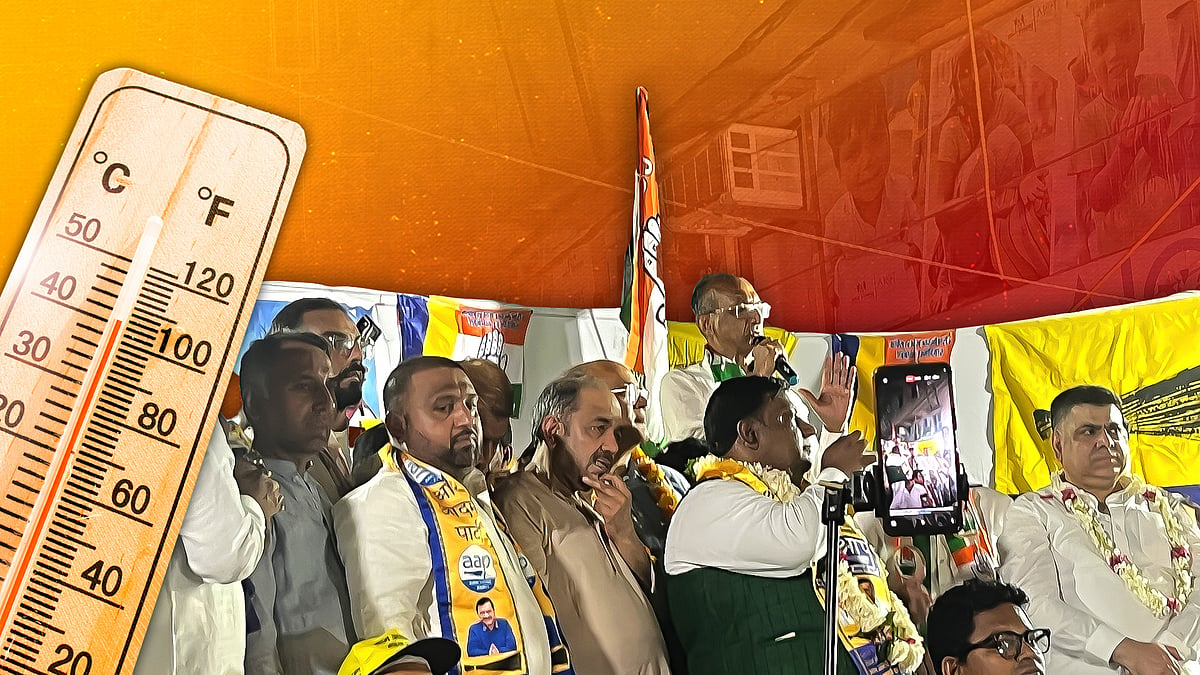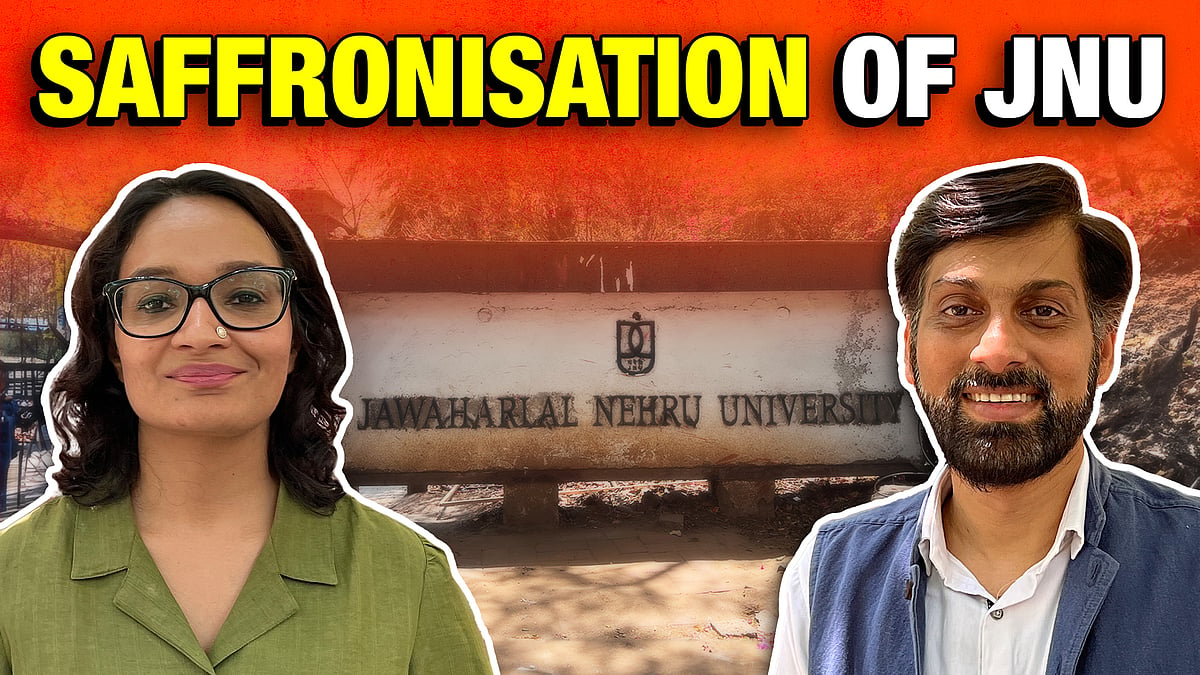From Modi factor to unemployment: Delhi voters divided, turnout lower than 2019
The highest turnout was recorded in North East Delhi, which has emerged as a key battleground in the national capital.
From the Narendra Modi factor to issues such as unemployment and education, voters in Delhi appeared divided as seven constituencies in the national capital went to the polls in the sixth phase on Saturday.
Delhi recorded a turnout of 54.48 percent until 7 pm, with the highest in North East Delhi at 57.97 percent and the lowest in New Delhi with 50.44 percent of voters turning up to cast their vote. The final figures were not available at the time of publishing this report.
The BJP, which registered a clean sweep in Delhi in the 2014 and 2019 elections, is up against the INDIA bloc, which has fielded three Congress candidates and four from the AAP this time. The run-up to the election saw several high-voltage events, with two roadshows by PM Narendra Modi, and campaigning by Congress leaders Mallikarjun Kharge and Rahul Gandhi as well as Delhi CM Arvind Kejriwal.
The seven constituencies in Delhi were among 58 seats – across six states and two Union territories – that voted in the sixth phase. The highest turnout was recorded in West Bengal, at over 77 percent, as per preliminary figures.
Meanwhile, the maximum temperature in the national capital was recorded at 43.4 degrees Celsius, which was three points above the season’s average. It’s not clear whether this was the reason behind the decline in the turnout – Delhi recorded a turnout of over 60 percent in 2019. The 2019 figure was 7.40 percent less than the national average.
‘Wasn’t unemployment and price rise an issue under Cong?’
In New Delhi, where BJP’s Bansuri Swaraj is hoping to make a successful debut against AAP’s Somnath Bharti, the divide was clear.
At about 11 am, 69-year-old Mani Dhawan, a retired Supreme Court lawyer, arrived at the polling booth in the Free Masons Hall in Janpath. “Only two factors are deciding my vote today. The image of our country in front of the whole world and my Ram Lalla.”
Asked if she thought unemployment and price rise were poll issues, she said, “Fortunately, I do not face that problem. But whenever I see all my helpers and servants carrying a smartphone, washing machine and air conditioner in their home…I do not think it is an issue in urban India.”
Pyaari Mittal, an 84-year-old resident from Connaught Place, stepped into the conversation. “Wasn’t unemployment and price rise also an issue under the Congress government?” She said PM Narendra Modi was like her son. “I hate it when people demean him. He is like my son and for him I can also sacrifice myself.”
Pawan Kumar, a security guard who stood in line to cast his vote as Dhawan and Mittal spoke, didn’t agree. “This time, you wait for results…In history, AAP has been the only party which has directly benefited the working class…we are coming out silently to vote for our Kejriwal,” he said, adding that the BJP has “played with fire”.
Bhupender Pandit, a construction worker, said, “All I want to say is that we want a political party which benefits the poor and supports the labour class. These are the only issues plaguing our country.”
Sympathy for opposition?
At a polling booth in Malviya Nagar in South Delhi constituency, Poonam, a 56-year-old housewife, came to cast her vote with her husband on a scooter. “Unemployment is the big issue this election. My children are well educated and young but it has become so tough for them to find jobs. It is not a good sign for our economy. That’s all I want to say.” She said the cases against several opposition figures were “politically motivated”.
Voters at three other polling booths said the action against AAP leaders in the Delhi liquor case had changed their perception of the party in power.
Sant Ram, a voter from Greater Kailash, said he was earlier a BJP supporter but had started supporting and voting for the AAP “when I saw someone like Kejriwal promising to change our life”. “But this case has rattled my trust in him. I saw on television that he has taken a Rs 100 crore bribe.”
BJP’s Ramvir Singh Biduri is pitched against AAP’s Sahi Ram in the Lok Sabha segment.
Also among the key battlegrounds in Delhi are East Delhi, where the BJP has fielded Harsh Malhotra against AAP’s Kondli MLA Kuldeep Kumar. The most watched contest is in North East Delhi – the BJP replaced all its candidates except Manoj Tiwari, who is up against Congress’s Kanhaiya Kumar in the constituency.
The other constituencies in Delhi are Chandni Chowk, where the Congress’s JP Agarwal is up against BJP’s Praveen Khandelwal, North West Delhi, where the BJP’s Yogendra Chandolia is pitched against Congress’s Udit Raj, and West Delhi, where BJP’s Kamaljeet Sehrawat is contesting against AAP’s Mahabal Mishra.
According to the Election Commission of India, the seven constituencies in Delhi have 1.4 crore registered voters, of which 45 percent are female and just 0.007 percent have registered themselves as third gender.
Votes will be counted on June 4.
EC guidelines
Just five days ahead of the elections, the IMD put Delhi on high alert as some parts of Delhi recorded temperatures up to 47 degree celsius. To ensure that the soaring temperatures does not lead to low voter turnout, the ECI issued a 13-page guideline, specifying facilities that should be available at all the polling stations.
Meanwhile, amid concerns about possible data manipulation, the Election Commission of India on Saturday shared the absolute number of votes for all the completed phases of the ongoing general election. In a press release, the ECI said that it has a “higher responsibility to serve the cause of electoral democracy with undeterred resolution”.
Just a day before the ECI released the voter turnout data in absolute numbers, the Supreme Court had refused to intervene in the matter. On Friday, the court had said that it would not direct the ECI to publish the booth-wise numbers of voter turnout and upload copies of Form 17C within 48 hours of polling. Adjourning the hearing of the pleas until the conclusion of the elections, the court had reasoned that it cannot intervene in the matter in the midst of elections.
 ‘Difficult to carry on’: Heatwave in Delhi but party workers spend long hours in the sun
‘Difficult to carry on’: Heatwave in Delhi but party workers spend long hours in the sun What are Delhi students’ big woes? Saffronisation, Kejriwal’s arrest, jobs or high fees
What are Delhi students’ big woes? Saffronisation, Kejriwal’s arrest, jobs or high fees